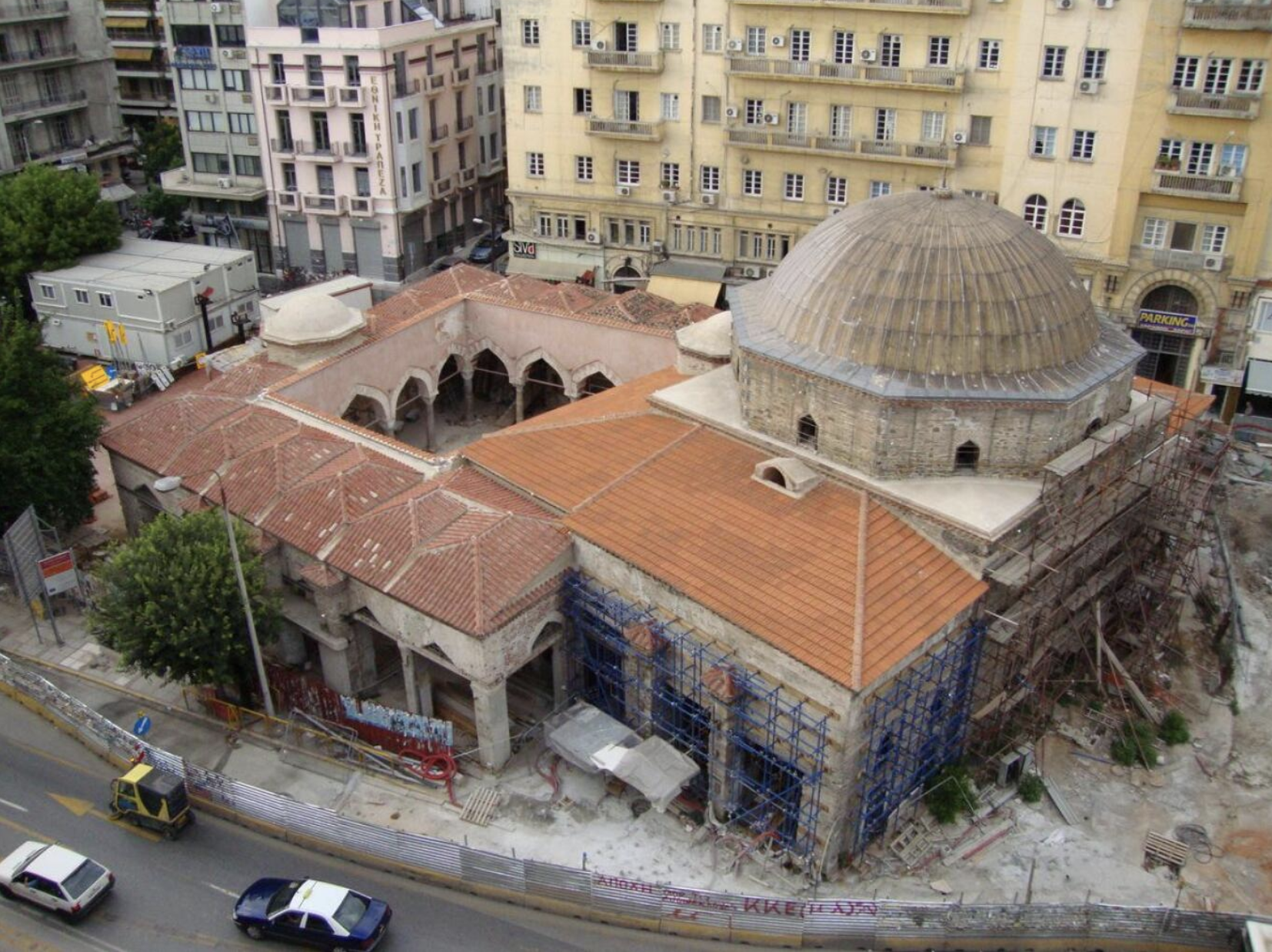Restoration and preservation works are fully underway on another important monument of Thessaloniki, the Hamza Bey Mosque, also known as Alcazar. This is a complex and demanding project, as the morphology of the monument has undergone significant alterations due to numerous interventions during various historical periods. The project is being carried out with funding of approximately €11,000,000 from the Recovery Fund.
“The restoration of the Hamza Bey Mosque, or Alcazar as the monument is commonly known due to its long use as a cinema hall, located in the center of Thessaloniki and in close proximity to the Venizelos station, is progressing according to schedule. Its restoration will return to the city another iconic monument,” stated Culture Minister Lina Mendoni during an on-site inspection. She added, “Over the past six years, we have been implementing a program of projects and actions in Central Macedonia, totaling more than €150 million from EU and national funds. This underscores the importance we attribute to monuments of unique historical and archaeological significance, which are gradually being returned to citizens in a restored state, entirely different from their current condition. It also reflects the importance the government places on Northern Greece.”
As she further noted, within the same program, projects are underway at Acheiropoietos, Rotunda, Hagia Sophia, Panagia Chalkeon, the churches of Saint Catherine, Saint Nicholas Orphanos, and Prophet Elijah, the Northern, Northwestern, and Western Walls of the city, the Ancient Agora, the Holy Spring of Saint John, the Bey Hamam Baths (Paradise Baths), and the monumental building of the Thessaloniki State Conservatory.
The Hamza Bey Mosque is located in the city center at the intersection of Egnatia and Venizelou streets. It is the oldest Islamic prayer house in Thessaloniki, built in 1467 by the daughter of military commander Hamza Bey. Later, the mosque’s colonnaded courtyard housed the Alcazar cinema for decades, a name that has persisted in collective memory. The mosque has been protected as a historical and archaeological monument since 1926 under archaeological law.
The square-shaped prayer hall of the mosque has interior dimensions of 11.54 x 11.54 meters and a maximum height of 17 meters. It features a lead-covered hemispherical dome resting on an octagonal drum. Additional chambers were added to the northeast and southwest sides and an offset portico to the northwest side and the western corner, forming a unified colonnade surrounding the mosque in a U-shape. The colonnade chambers are aligned parallel to the side walls of the main mosque. The colonnade comprises an open arcade (revak) on the west with closed side chambers to the north and south. The atrium is trapezoidal in plan, with its arcades defined by colonnades.
The mosque comprises three distinct sections corresponding to three successive chronological construction phases: the prayer hall, the colonnade, and the atrium.
Ask me anything
Explore related questions





